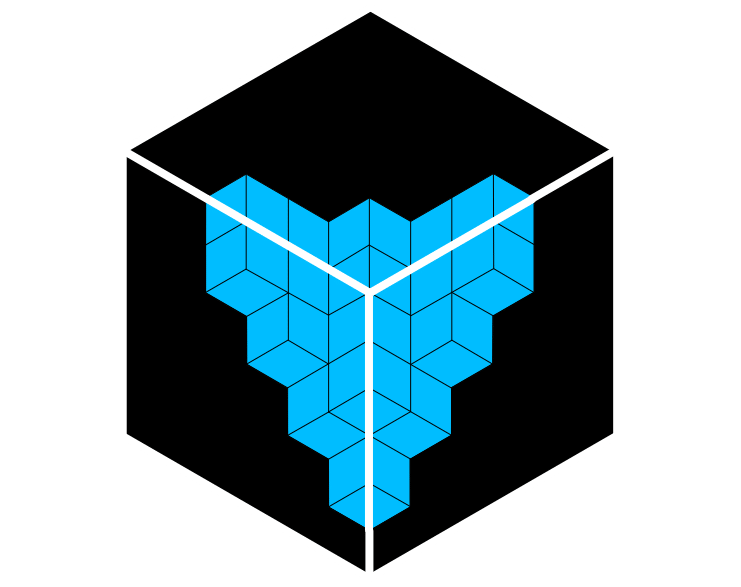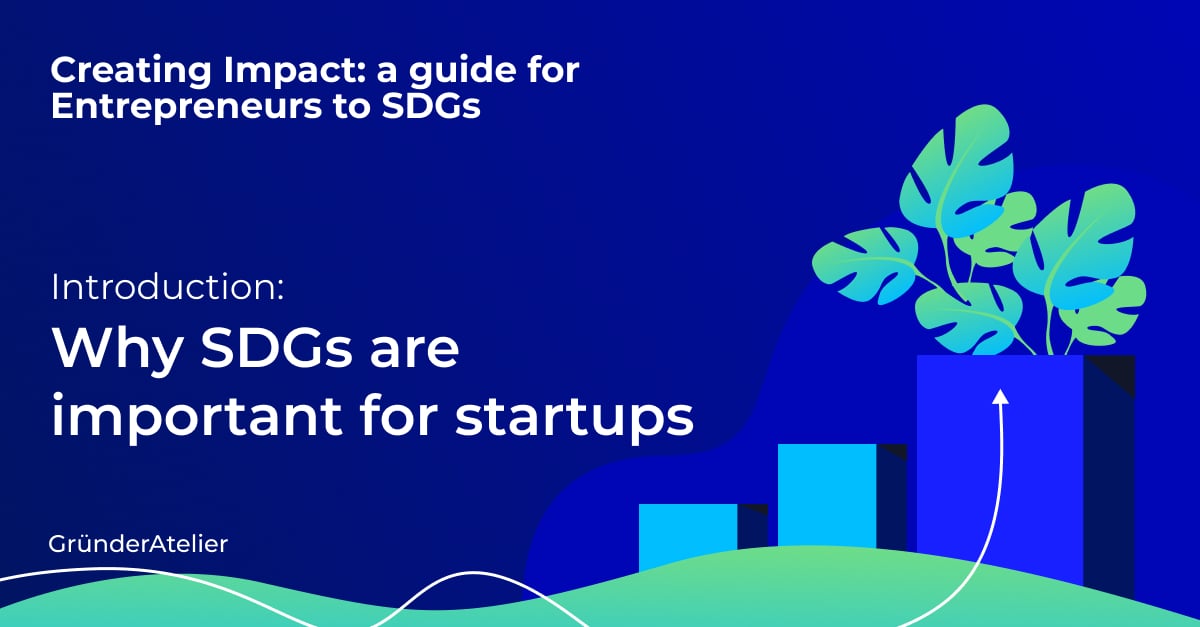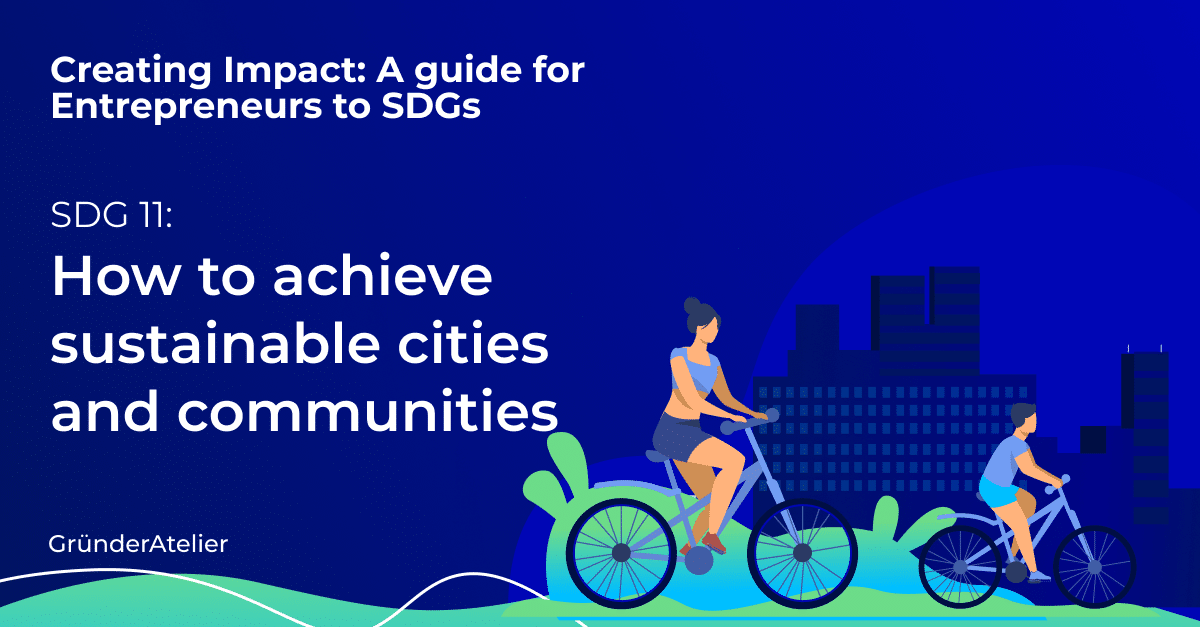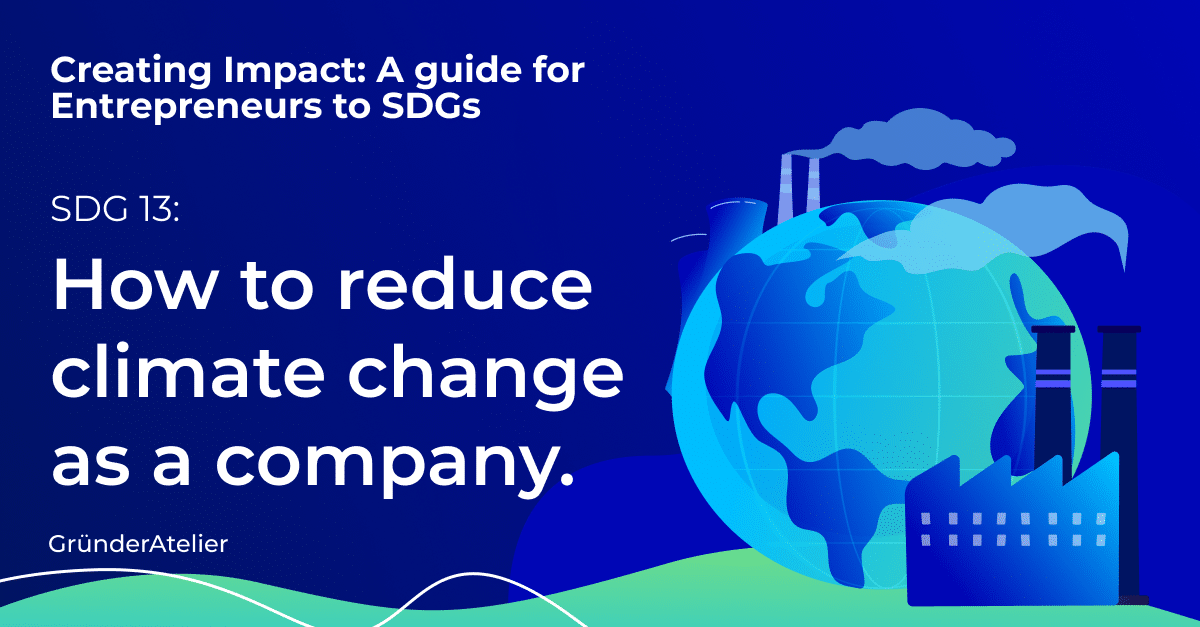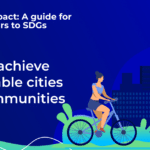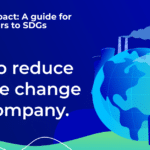Sustainable consumption and production examples for companies
Author: Bruno Almeida
Estimated reading time: 10 min
Introduction
Following the list of the SDGs, the twelfth goal is to “Ensure sustainable consumption and production patterns” (1).
The purpose of focusing on sustainable consumption and production patterns is to integrate sustainability into the economic growth of countries, contributing to global environmental health. (1)
Is crucial to understand that environmental degradation and economic growth are not necessarily correlated, doing more (production) with less (waste) is the ideal solution (2).
From 2000 to 2017, the global material footprint increased by 70%, and over the 17 years, 1 million plastic water bottles were purchased per minute and 5 trillion plastic bags were thrown away. In 2019, the numbers of electronic waste reached alarming numbers, with an average person generating 7.3 kilos of electronic waste with only 1.7 kilos of them that ended up being recycled (1).
Faced with a challenge of this magnitude, each person needs to question their decisions and understand the mistakes that each one is making in order to be able to find solutions that can help achieve this goal.
Ecological Footprint
To realize what we are doing wrong, we need to understand what is the ecological footprint, what metrics is it composed of, and what we must do to improve it.
In general, the ecological footprint is the metric used to understand how much nature we have and how much we need. With this data, it is possible to improve sustainability and good living conditions in countries and help leading groups optimize their investments in the public projects they carry out. But above all the ecological footprint helps each one of us to understand the impact it has on the planet and in a way, draws attention to all people who think they are on a good path, but they need to do more to improve our planet’s ecological situation (3).
To be able to achieve sustainability, we must reduce the ecological footprint, for this, we need to change the way we produce and consume goods and resources.
The Barcelona Institute for Global Health gives the example of the agriculture sector which is the largest consumer of water in the world. For this reason, controlling the amount of water that is used for production through the irrigation system is a vital process. This example helps us to realize that, to achieve this goal, it is essential to use, efficiently and effectively, the natural resources that we have available on our planet, in addition to the way we dispose of all toxic and polluting waste (4).
To understand your ecological footprint, you can visit this website (https://www.footprintcalculator.org/home) and take the quiz and know how many planets we need if everyone lives the same way you live.
Material Footprint
The material footprint is a metric that indicates the consumption of natural resources, it is related to the global extraction of all the raw material of the planet Earth that is used in economies. The objective of the Material footprint is not directly related to the use of natural resources by countries, but rather to point out the link between the beginning of production (raw materials extracted from the natural environment) and the end of production (a product or service is consumed) (6).
From the Material footprint, we realize how the raw materials are supplied in the world and how they are used, what the impacts of the extraction of materials are, and what the consumption of each environmental resource is (6).
How can companies help the achievement of SDG 12?
Renewable Natural Resources
There are several ways to help reduce the global ecological footprint and help achieve SDG 12, some examples are related to how companies should conserve all available resources and reduce all waste, for example investing in water and energy conservation, seeking renewable forms of energy, and pursuing the implementation of efficient waste management (5).
Something important is that companies should reach and help consumers in a way that they can do more with less, thus fostering sustainable consumption (5).
Reduce Food Waste
Food waste is a general problem, there are several catering companies that are forced to waste food that has not been consumed during the day every day. This problem is directly linked to companies’ processes in using and producing more food during the day than it’s necessary. Each company needs to understand and create an intelligent solution that reduces this problem (5).
Several groups and organizations seek to help companies, especially those in the restaurant sector, and try to create partnerships. To solve this problem, the Food Reform for Sustainability and Health project was founded, which develops solutions to create a feeding system to reach and support a healthy population on a healthy planet (7).
Reduction, Recycling, and Reuse
There are 3 R’s that are the most important words in the search for sustainability, in the case of companies, they should aim to respect all of them and introduce them into their culture.
In the case of Reduction, as the word says, we are reducing, in particular, reducing waste. It is essential to make a correct management of waste to be able to protect the environment around us. Companies must acquire resources that last and have a long-term lifetime, search for products and packaging that does not create toxic waste, and understand which products can be redesigned to use fewer natural resources (8).
Recycling is an act that is common or should be common in all companies, it is a way to prevent CO2 emissions of greenhouse gases, water pollutants such as bacteria and viruses, and to save energy (8).
Finally, Reuse, in this case, all products purchased by companies must be reusable, cases such as boxes, plastic bottles, and even coffee mugs, pens, and pencils that are rechargeable and use cloth napkins or towels (8).
Explain and include the sustainable practices in their reports
People must and should understand what companies need to do to become more sustainable. In a quest to help their community, companies should include all future projects and plan to achieve sustainability in annual reports. This is a smart idea in two ways, helps people understand what companies do, and encourages these same people to take similar actions (5).
Companies have several options to avoid waste and seek sustainability, for this reason, both their employees and employers, as well as customers, must do so effectively and responsibly.
Companies to take inspiration from
If you are looking for some inspiration, here is a list of companies that make a difference with their sustainable initiative towards the achievement of SDG 12.
Impact Berry
Impact Berry is a Hong Kong-based Start-up that develops coffee from an ethical origin, intending to avoid the carbon emissions that originate in the tea and coffee supply chains. In addition to carbon emissions, the start-up sustainably grows coffee beans in fertile soils of volcanic origin (9).
The start-up is intended to produce and distribute coffee in a responsible way that relates to the needs of consumers and the well-being of the environment. Impact Berry takes on the concern to protect soils and ecosystems and accountability during the supply chain in a sustainable way (9).
With its core business, Impact Berry promotes SDG 12.
HYDRAO
HYDRAO is a French startup that produces intelligent solutions for good water management and conservation. The start-up has hydrao meters that use the Internet of Things (IoT) to perceive and store all the volume information, flow rate, and water temperature in all buildings in the cities. (9)
This engine produced by the company has a micro turbine which allows it to have a long service life without requiring a battery. Intelligently, the engine detects abnormal consumption, leaks, and faucets that have been wrongly closed in addition to analyzing the use of water in buildings (9).
Assuming the business idea of avoiding excessive water consumption, the start-up aims to achieve the objectives of SDG 12.
Loopworm
Loopworm is an Indian start-up that sustainably produces animal feed. Their main objective is to develop food while also protecting the environment and essentially, managing food waste efficiently (9).
The startup, through a waste 0 process, converts food waste into Protiworm, feed intended for fish, which is rich in proteins. In addition, the content in the feed provides greater ease of digestion. During the process, purified oil and a natural fertilizer are also developed as by-products (9).
Seeking the conservation of food and the use of food waste the start-up is directly linked to the objectives of SDG 12.
Actions you can take in your daily life to achieve SDG 12
To achieve the objectives proposed in SDG 12, each one of us has to be responsible. In addition to companies, organizations, and governments, we must take actions in our personal lives that can help achieve the proposed objectives.
Here is a list of things each one of us can do to become closer to SDG 12.
- Using renewable natural resources to save mainly water and energy and create habits to reduce energy use in our daily life.
- Reduce waste to help improve our ecological footprint.
- Reduce food waste and seek to create a balanced diet so that we do not waste the resources we have at our disposal.
- Reduce, recycle, reuse, 3 words, simple and practical, seek to buy products that are not plastic and that can be reused, buy products with long life and seek to avoid waste.
GründerAtelier’s Impact Accelerator
This was the twelfth article of our SDGs series, which aims to make the United Nations’ Sustainable Development Goals easy to put into practice for start-ups and entrepreneurs, in general.
If you are in charge or work for an impact-related start-up that supports one or multiple SDGs you can apply to our Impact Accelerator where we will guide you through the journey to become investment-ready and then, introduce you to our VC partners.
Sources
(1) Goal 12: Ensure sustainable consumption and production patterns. (n.d.). United Nations. Retrieved from https://sdgs.un.org/goals/goal12. Accessed on 09/12/21.
(2) Goal 12: Sustainable consumption and production. (n.d.). Retrieved from UN Environment Programme website: https://www.unep.org/explore-topics/sustainable-development-goals/why-do-sustainable-development-goals-matter/goal-12. Accessed on 09/12/21
(3) Goal 12: Sustainable consumption and production. (n.d.). Retrieved from Global Footprint Network website: https://www.footprintnetwork.org/our-work/ecological-footprint/. Accessed on 09/12/21
(4) Goal 12: Sustainable consumption and production. (n.d.). Retrieved from Barcelona Institute for Global Health website: https://www.isglobal.org/en/-/sdg-12-ensure-sustainable-consumption-and-production-patterns. Accessed on 09/12/21
(5) Goal 12: Sustainable consumption and production. (n.d.). Retrieved from Business for 2030 website: http://www.businessfor2030.org/goal-12-ensure-sustainable-consumption-production. Accessed on 09/12/21
(6) Wiedmann, T., Schandl, H., Lenzen, M., D. Moran, D., Suh, S., West, J., & Kanemoto, K. (2013). The material footprint of nations. Proceedings of the National Academy of Sciences, 313, https://www.researchgate.net/publication/256425876_The_material_footprint_of_nations. Accessed on 09/12/21
(7) Goal 12: Sustainable consumption and production. (n.d.). Retrieved from World Business Council for Sustainable Development website: https://www.wbcsd.org/Programs/Food-and-Nature/Food-Land-Use/FReSH. Accessed on 09/12/21
(8) Goal 12: Sustainable consumption and production. (n.d.). Retrieved from Boulder County website: https://www.bouldercounty.org/environment/recycle/reduce-reuse-recycle/. Accessed on 09/12/21
(9) Goal 12: Sustainable consumption and production. (n.d.). Retrieved from Start-ups Insights website: https://www.startus-insights.com/innovators-guide/discover-5-top-responsible-consumption-production-solutions/. Accessed on 14/12/21
